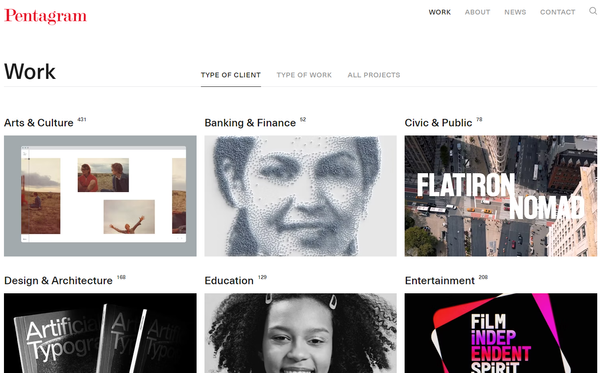Pentagram has long been a beacon in the design world—a massive name with a reputation for sophistication and class.
But in an industry obsessed with constant reinvention, there's a prevailing critique that Pentagram, along with similar design giants like Landor and CGH, might be out of touch with the cutting edge of innovation.
Is this critique fair, or is there more to these design behemoths than meets the eye?
Not a Monolith
Pentagram isn’t a monolithic entity but rather a constellation of around 30 small design teams, each operating under one recognisable brand.
This unique structure means that what you see from Pentagram is often just a snapshot, not the full picture.
Each team brings its own flair and approach, so a single project doesn’t necessarily define the entire agency's creative spectrum. The perception that Pentagram is “out of touch” can sometimes be a misinterpretation of this complexity.
In design, there’s a delicate balance between pushing boundaries and adhering to the practical needs of clients.

Pentagram’s work, alongside that of other established firms, tends to prioritise safety and effectiveness—ensuring that their designs serve the client’s needs without unnecessary risks.
This conservative approach can sometimes be mistaken for a lack of innovation, especially when compared to the more avant-garde, chaotic work coming from smaller, independent agencies.
Like The Designers Republic. However, to dismiss Pentagram’s work as uninspired or outdated would be a mistake.
Diverse Client-Base
Pentagram's designs are meticulously crafted to solve problems in a way that resonates with their diverse clientele.
Good design, after all, is not just about breaking new ground but also about effectively addressing the client's requirements. For large, global clients with varied audiences, the stakes are high, and the room for disruptive experimentation is often limited.
In these cases, a more restrained, yet sophisticated approach is necessary to ensure broad appeal and effectiveness.
It's also worth noting that studying the work of established firms like Pentagram can be incredibly valuable for designers.
Understanding why a design works, even if it isn’t groundbreaking, can provide insights into effective problem-solving and client management.

Dismissing these designs as merely "safe" overlooks the skill involved in creating work that consistently meets high standards and achieves client objectives.
Innovation is crucial, but so is functionality and client satisfaction. The design spectrum includes both bold experimentation and meticulous adherence to established principles.
The key for any designer is to engage with a wide array of design styles and understand the rationale behind them. This appreciation for diverse approaches can enrich a designer’s practice and provide a more nuanced perspective on what constitutes good design.
So while Pentagram and its counterparts may not always push the boundaries of design, their work remains a testament to the power of thoughtful, client-centred solutions.
They offer valuable lessons in balancing creativity with practicality—a lesson that is just as important as breaking new ground in design.
Find out more about Pentagram and their work by visiting Pentagram.com.











